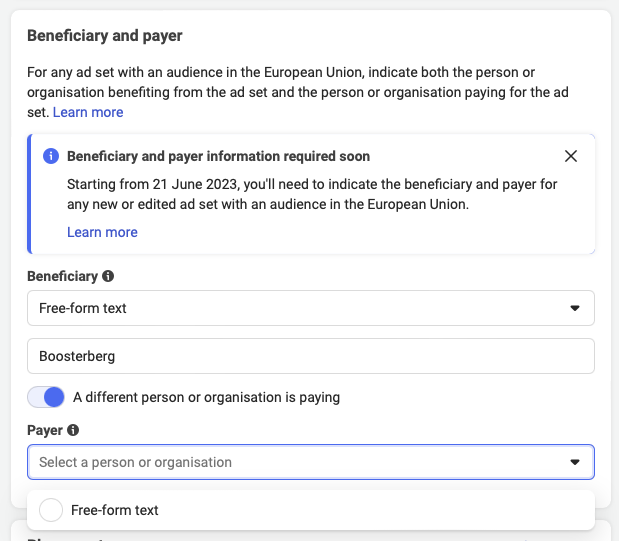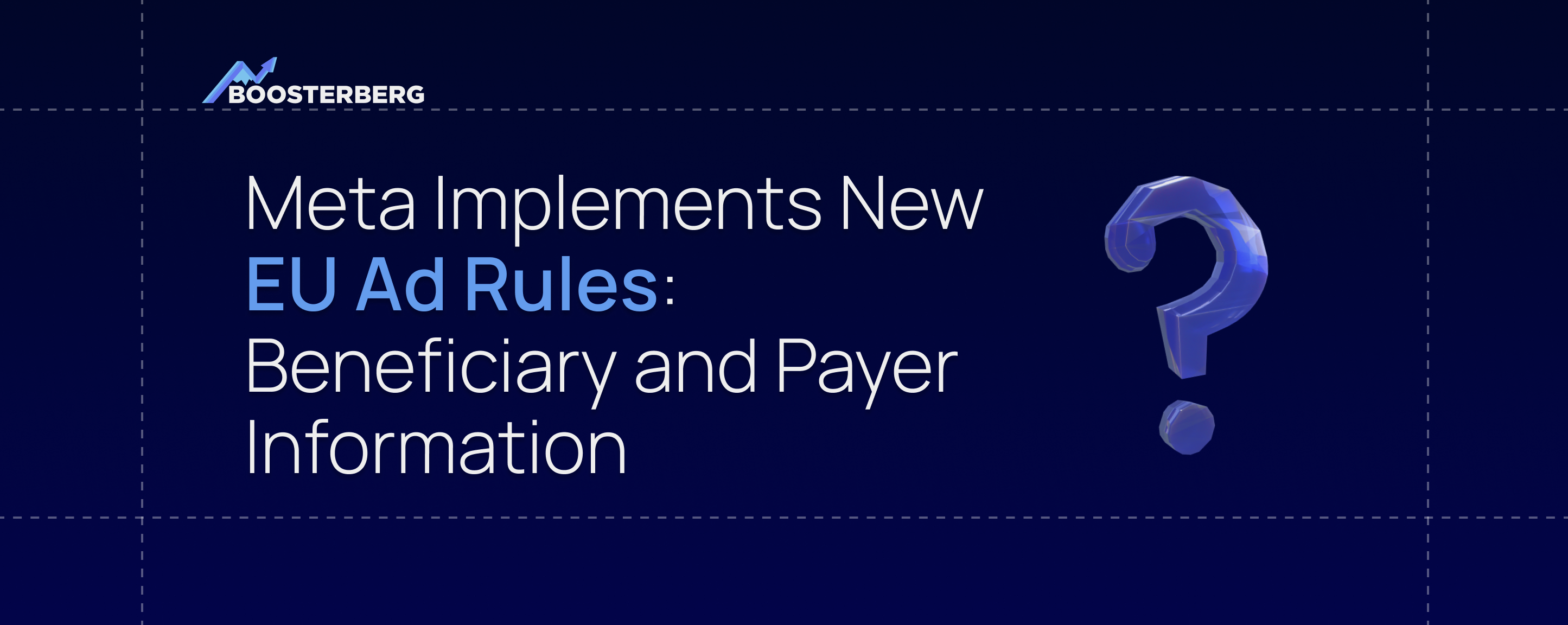In early June, Meta introduced a new requirement for advertisers who want to target the European Union (EU) and its territories. They now need to provide the names of the beneficiary and payers for their ads.
Starting from June 21st, due to the EU Digital Services Act (DSA), all advertisers on Meta platforms must comply with this rule for any new, duplicated, or edited Facebook ads targeting the EU. You can find the list of EU countries here. Your ads will not be published if you don’t follow this requirement.
But what do these new EU Ad rules mean?
The payer is the entity that pays for the ad, while the beneficiary is the entity that benefits from the ad. Usually, they are the same, but there are situations where it can be a bit more complicated.
- For small business owners who run their own ads without the help of an agency, you need to enter your business name as both the payer and the beneficiary.
- If you have a subsidiary company that a larger parent company owns, things work a little differently. The beneficiary refers to the name of the subsidiary or the brand it operates under, while the payer is the bigger company that owns it.
- For individuals promoting a specific product or service, the beneficiary would be the name of the product or service itself, and you would list your own name as the payer.
How and where do you enter the beneficiary and payer names when creating a Facebook ad?

There, you can enter the beneficiary’s name and choose to enter the payer’s name if it’s a separate entity.

In some cases, you may have options that Meta has verified, or you can select from a list of “recently used designations” in your ad account.
Will this have an impact on the performance of my Facebook Ads?
No, this will be just one extra step when setting up your campaigns and won’t impact your ads’ cost, delivery, and overall performance.
